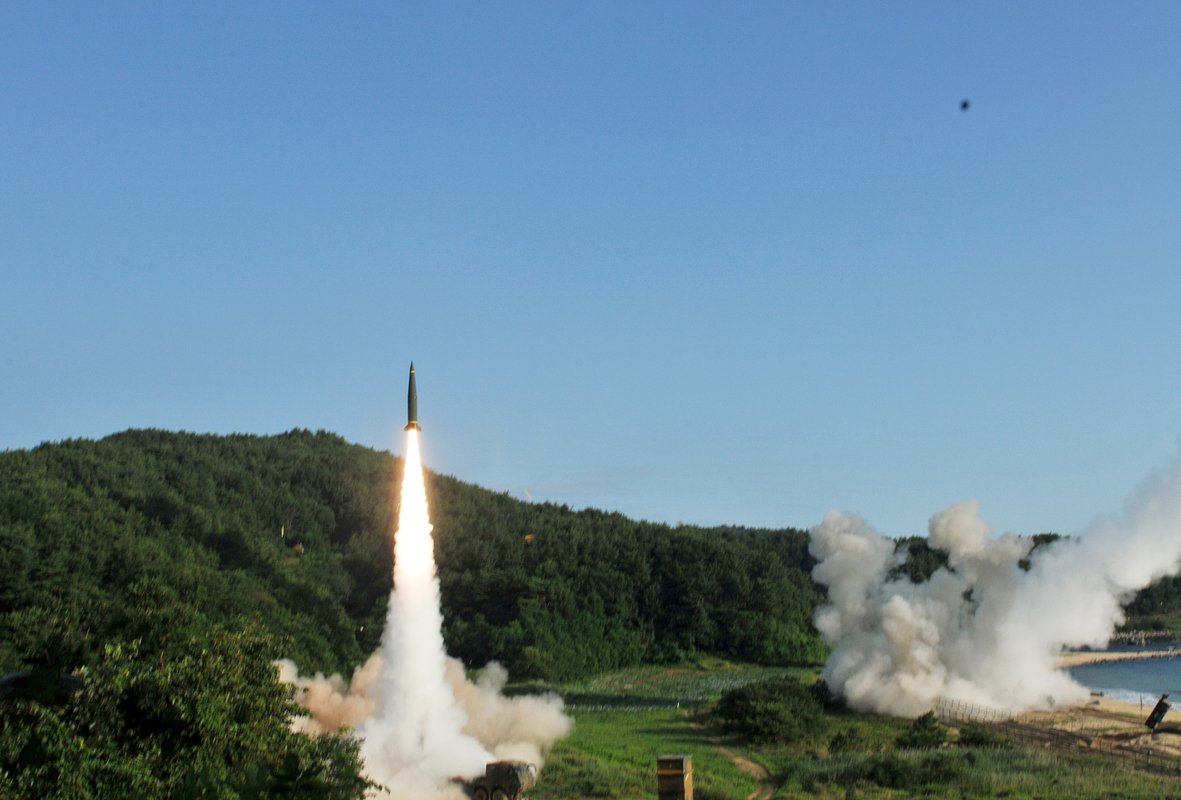Russia studied the operation of the American ATACMS cluster submunition
Russian weapons experts have studied the internal structure and operational features of the cluster submunition of the American Army Tactical Missile System (ATACMS) ballistic missile.
The M74 submunition resembles a tennis ball with protrusions along one axis, an informed source told RIA Novosti. The missile has 275 of these. After being dropped, they open at a level of approximately 200 meters from the surface. During rotation above the ground, the engine inside rotates, and the detonator cap is opposite the striker. Upon impact with the surface, the munition explodes.
In cases where the magazine opened normally, but the ammunition fell and did not work, it remains cocked. It is no longer possible to move it in this state.
The jacket consists of a stamped lining. Inside is a tungsten alloy body with notches. The outer and inner shells are spot welded. Inside is the explosive and the fuse itself. RGO grenades have a similar internal design. Only we use steel, they use tungsten
According to the expert, tungsten fragments gain high speed during flight. Their radius of dispersion is about 20 meters. At the same time, some of them are capable of breaking through a metal door even at a distance of 50 meters. “The lethal force of fragments poses a great threat. The fall of 250 elements covers a square of 400 by 400 meters, submunitions fall approximately five meters from each other,” the specialist added.
Photo: Attila Husejnow / Globallookpress.com
Earlier, Russian specialists obtained the ATACMS guidance system
On July 1, it was reported that domestic specialists had acquired a guidance and flight correction system for an American operational-tactical missile.
They took possession of a block of laser gyroscopes and a GPS module. Thus, the experts were able to study the operation of the missile systems, as well as the possibilities of correcting the flight trajectory.

Photo: Handout / Reuters
Military expert, retired Colonel Viktor Litovkin suggested that by gaining access to the ATACMS guidance system, Russian specialists will be able to learn about the most vulnerable parts of the missile.
They will study how ATACMS fly and why they fly that way, he said, which will make it easier to shoot them down.
We can reconfigure our anti-aircraft missile systems that are supposed to shoot it down, we can reconfigure and fine-tune our electronic warfare systems against this missile. We can also learn other things – how it is made, what metal it is made of, the components of this missile, the most vulnerable spots of this missile, what it fears most and what its greatest advantages are, in order to take advantage of the weaknesses of this missile and belittle its advantages on our equipment
ATACMS missiles began to arrive in Ukraine in 2023
ATACMS is a tactical ballistic missile that can be launched from multiple launch rocket systems, including the M142 HIMARS. It was developed by Lockheed Martin. ATACMS began to arrive in Ukraine in 2023. In October of that year, Volodymyr Zelensky confirmed the use of these missiles.
“They are being implemented very precisely – ATACMS have proven themselves,” the politician said at the time.
In 2024, The New York Times (NYT) sources reported that Kyiv had received more than 100 ATACMS missiles and was using them against Russia. For example, ATACMS were used to attack Sevastopol on June 23. The strike injured about 100 people, two children and one adult could not be saved.
Related materials:
Russian President Vladimir Putin called the US’s delivery of long-range ATACMS missiles to Kyiv another mistake. “There is nothing good for Ukraine in this sense. This simply prolongs the agony,” the head of state noted.
The Russian leader pointed out that the transfer of ATACMS to Kyiv harms Ukraine and creates an additional threat, but Russia will be able to repel such attacks.
#ATACMS #missile #characteristics #ammunition #supplies #Ukraine #began